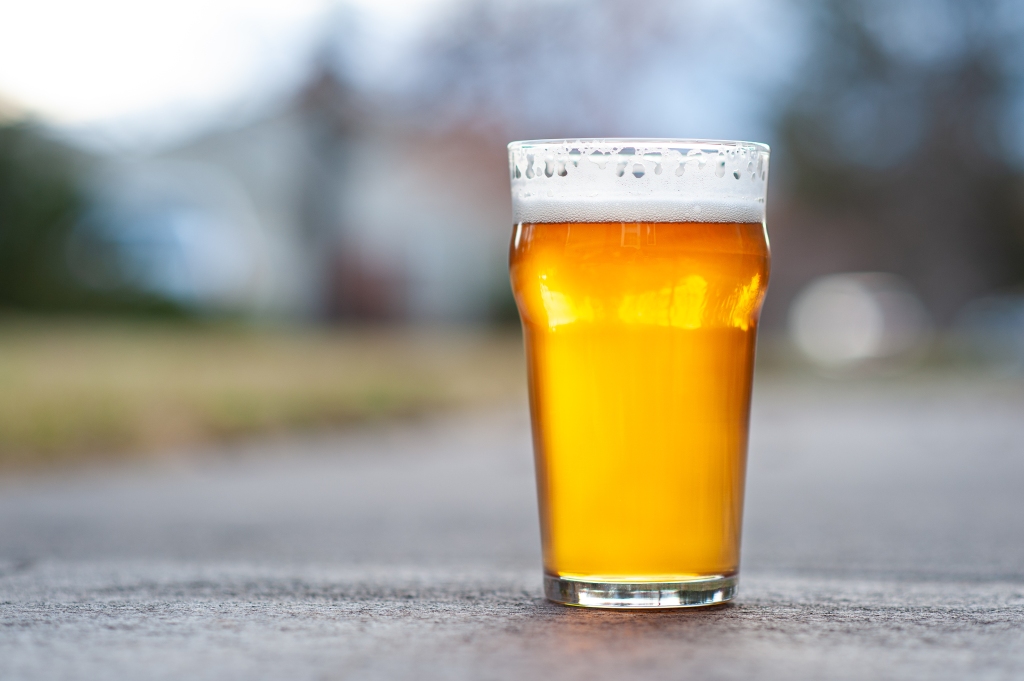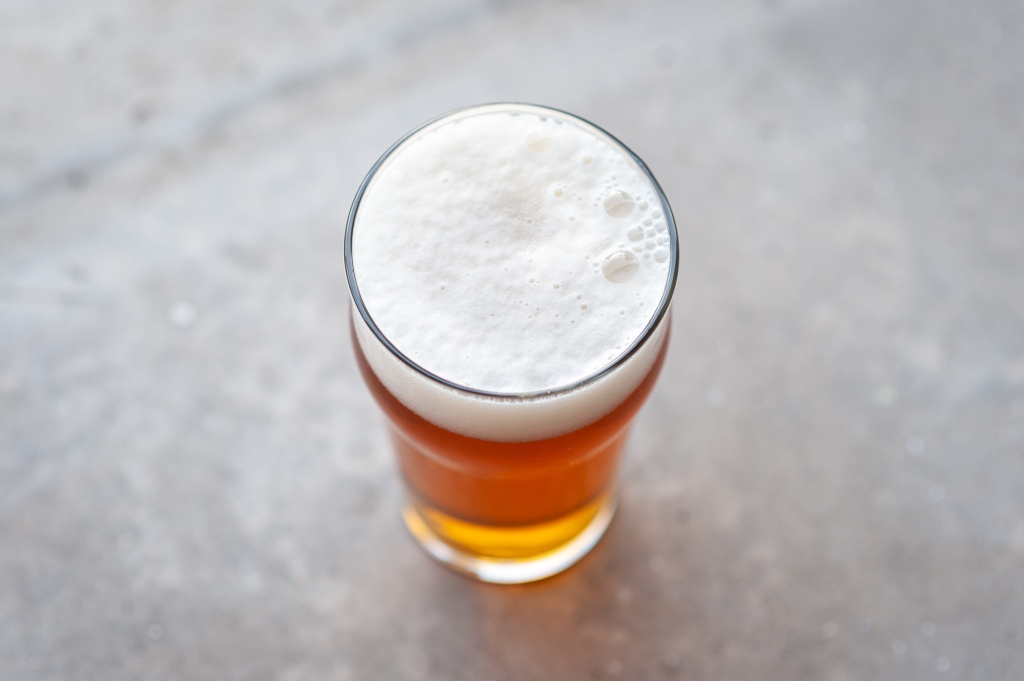How to fake an English accent

One of my brewing goals for 2021 is to brew more low-gravity, low-ABV beers. 2020 was a year of heavier-than-usual drinking for me (and, I suspect, many others around the world), and while I enjoy beer and drinking beer, I don’t necessarily enjoy the things that come with it—weight gain, hangovers, etc.
And all that aside, there’s a certain pleasure to being able to slam a couple of pints without getting wasted.
I got a bit of an early start on this goal by brewing a pair of English milds back in October and November. The first was a traditional dark mild, based on Jamil Zainasheff’s oft-referenced recipe. It was damn good. I might post about it later. But it wasn’t really my creation, just a riff on someone else’s design.
A couple weeks later, I decided to attempt a pale mild—a style that doesn’t really exist anymore, but one that enjoyed quite a lot of popularity before the rise of bitters. Like the English bitter, it’s a very small beer. According to the Brewers Association, OG should be between 1.030 and 1.036, FG between 1.004 and 1.008, and ABV between 3.4 and 4.4%. Unlike the dark mild, it’s, well, pale (6-9 SRM). But like the dark mild, it’s all about the malt—not hops or yeast.
Because I don’t get much joy out of doing anything straight, I decided to throw my pale mild a curveball: I used kveik yeast, American malt and hops, and mashed really high, hoping to give this diminutive beer a bit of backbone.
What’s in it?
The Vitals
- Method: BIAB
- Batch size: 4.5 gallons
- Mash: 60 minutes @ 160F
- Boil: 60 minutes
- Ferm temp: 85F
- OG: 1.041
- FG: 1.013
- ABV: 3.7%
- IBU: 21
The Grain
- 4.5 lb. Mecca Grade Estate Lamonta (Pale 2-Row) – 82%
- 0.5 lb. Mecca Grade Estate Opal 44 – 9%
- 0.5 lb. Aromatic Malt – 9%
The Hops
- 10g Amarillo [8% AA, 11 IBU] @ 60
- 20g Amarillo [10 IBU] @ 15
The Rest
- Water: 5.3 gallons Bend tap + 1 tsp gypsum, 0.75 tsp CaCl2, and 1g lactic acid 88%
- Yeast: 1/3 packet of Lallemand Voss, sprinkled on wort in fermenter
How’d it go?
There’s not really much to say about a brew day as simple as this one.
Small grain bills make everything easier and quicker, and they also boost my efficiency like crazy, since I always do full-volume mashes. My efficiency for this batch was a whopping 93%, compared to my usual 78% or so. That meant I overshot my BeerSmith-estimated OG of 1.036 by 5 points, ending up at 1.041. Luckily, the combo of Voss yeast—which steadily attenuates to around 1.012 for me, regardless of OG—and a very high mash temp (160F) meant that I still ended up with an appropriate alcohol level.
Brewing with kveik is also great because I spend a lot less time chilling the wort. Unlike a regular US-05 beer, which I need to get down to around 70F with my immersion chiller, or a lager that needs to get down to the mid-50s, I can stop chilling kveik beers around 90-95F and count on the transfer to the fermenter dropping it another 5ish degrees. For this beer, I quit chilling at 90, and the yeast hit the wort at around 85F.
Fermentation was as rapid as I expected, based on past kveik experience. There was visible airlock activity within several hours, and the beer was basically done by the following evening. I let it sit a few more days to finish up, then quickly crashed it to near freezing and transferred to a sanitized, CO2-flushed keg. As is typical with kveik, this beer was grain to glass in under 7 days. It was also remarkably clear, even at kegging. Voss—at least this Lallemand isolate—drops out like a rock.
How’s it taste?
My reasons for going with kveik for this batch were twofold:
- In my experience, kveik beers have a noticeable fullness that is often missing if the same beer is made with a traditional ale yeast. In bigger beers, this can be a distraction, but in a small beer like a mild, I thought it might be a strength.
- Voss is known for throwing of orange esters, and while milds aren’t generally supposed to be as estery as English Bitters, I thought that orange note might play well with Amarillo hops, which are also known for their citrusy flavor and aroma.

Appearance: Deep gold, not quite amber, with a fluffy white head. The head never really goes away, leaving beautiful lacing on the glass all the way down. (I think the high mash temp helped here.) Clarity is excellent, especially after several weeks in the keg at keezer temps, but it was already pretty dang clear at packaging. I only used whirlfloc on this beer, not gelatin, so I think the Voss h ad a hand in the clarity.
Aroma: You know when people say they like beer-flavored beer? This beer smells like beer-flavored beer… with an ever-so-slight citrus twist. Bready, classic malt character with a light touch of cookie dough and faint spice, and then the hint of orange from the Voss and Amarillo hops.
Taste: Despite using Norwegian yeast and American hops and grain, this beer tastes (to me, at least) quintessentially English. As in the aroma, the malt dominates the taste, with the cookie dough note that I assume is coming from the Opal 44 coming through a little stronger than it did on the nose. The citrus element is also stronger, though the hops decidedly take a back seat to the malt. This is a very balanced beer, not a bitter one. No one flavor is too heavy.
Mouthfeel: Kveik and high mash temps took a beer that could have been watery and made it feel just as substantial as a 5.5% ESB. While the finish is dry-ish, urging you to take another sip, the flavor lingers on your tongue. And given how balanced those flavors are—and the low, low ABV—you might well take enough sips to have a second pint… or a third.
How would I change it next time?
If you’ve read a lot of my posts, you may notice that this header is different. Used to be, I’d title this final section “Would I brew it again?” But the answer was almost always yes, and it’s boring to say the same thing every time. So here we are.

Anyway, I think this beer is pretty excellent as-is, but there are a couple small tweaks I might try next time.
First, I’d dial back the Opal 44 just a bit, maybe to 5% of the total grist; it’s not that I dislike what it’s doing here, it’s just that I think its cookie dough thing may be overshadowing the other malts just a little bit. I’d leave the Aromatic alone, since I think it contributes a more general maltiness. It might be interesting to try making it with Maris Otter rather than the Lamonta, too, but I like to use local ingredients when possible, and I find Lamonta is quite close to MO anyway.
I have no issue with the hops; I love what they’re adding to the beer. I also love what I got out of the yeast, though I would think about doing a split batch with Voss and S04 or Imperial Pub next time to see if there’s a big difference. That said, I did my aforementioned dark mild with S04 and I can’t distinguish much of a difference in yeast character there. Your mileage, of course, may vary.

This looks and sounds like a great beer, I definitely would like to try it out. I tend to favor Fermentis yeasts, they’ve given me great success so if I do this I’ll probably opt for S-04.
Awesome write up, thanks!
S04 would make a great version of this beer. I made the dark mild I referenced in the intro with that yeast and it’s delicious. Cheers!
Thanks man, I´ve been brewing so much English style beers with Kveik and love it. Gonna go with Framgarden for my mild, it´ll be a bit darker though (around 30 EBC).